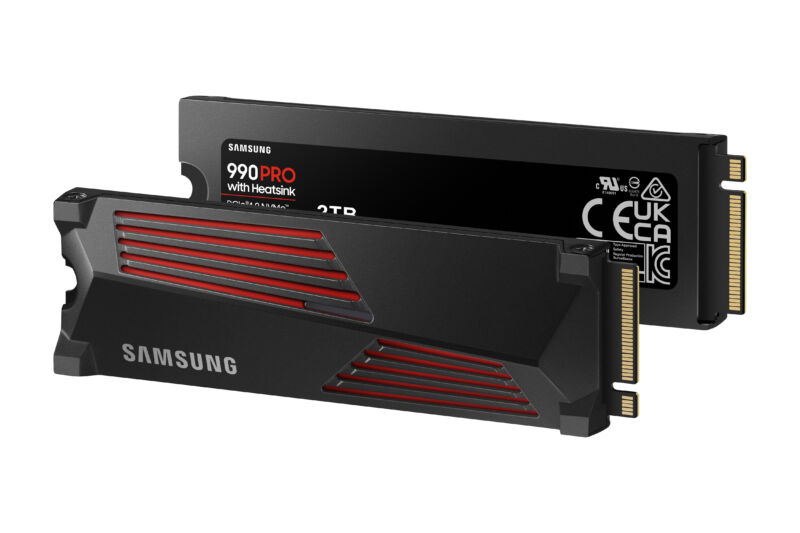-
 chevron_right
chevron_right
Samsung announces 990 PRO SSDs for PCIe 4.0 with big speed bump
news.movim.eu / ArsTechnica · Wednesday, 24 August, 2022 - 15:30

Enlarge / Samsung's newly announced 990 PRO with Heatsink SSD. (credit: Samsung)
Samsung's 990 PRO, its latest NVMe PCIe 4.0 SSD, aims to give gamers, 3D-renderers, and 4K/8K video editors a decent ratio of price to performance if this top-of-the-line drive can get close to its promised specs in real-world testing.
The 990 PRO is touted as offering "nearly the highest speed currently available from the new PCIe 4.0 interface" and a 55 percent increase in random performance over its 980 Pro . Samsung touts sequential read and write speeds of 7,450 megabytes per second (MB/s) and 6,900MB/s, respectively. Random read/write speeds are listed at 1,400K and 1,550K IOPS, respectively, based on IOmeter 1.1.0 performance. DRAM for the 990 PRO drives is 1GB per terabyte of storage, up to 4GB for the 4TB model.
Samsung suggests the performance bump comes from its own V-NAND and proprietary controller advancements. Power efficiency is improved up to 50 percent over the 980 PRO, the company claims, while a nickel coating and heat-spreading label dissipate heat. The heatsink model gives you more temperature assurance while, of course, adding RGB lights.


